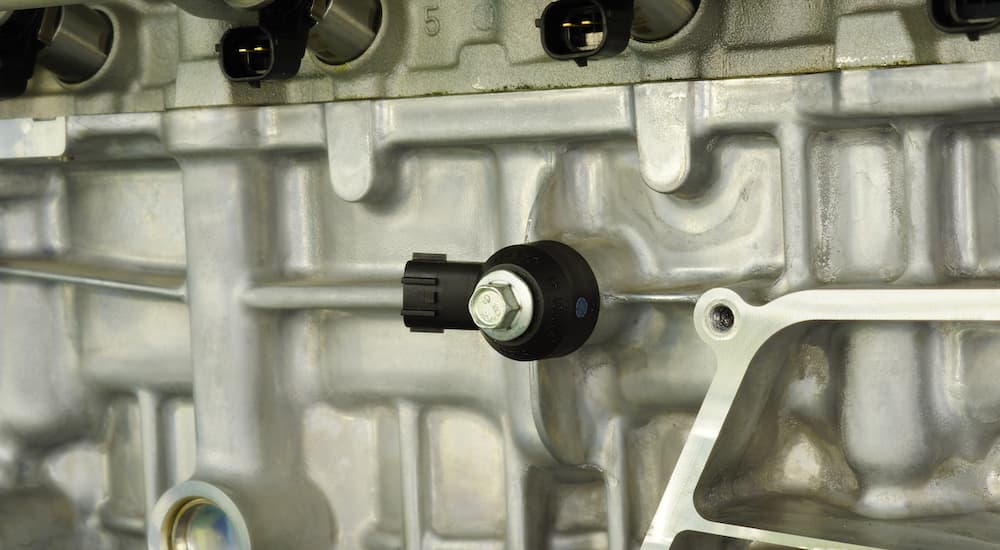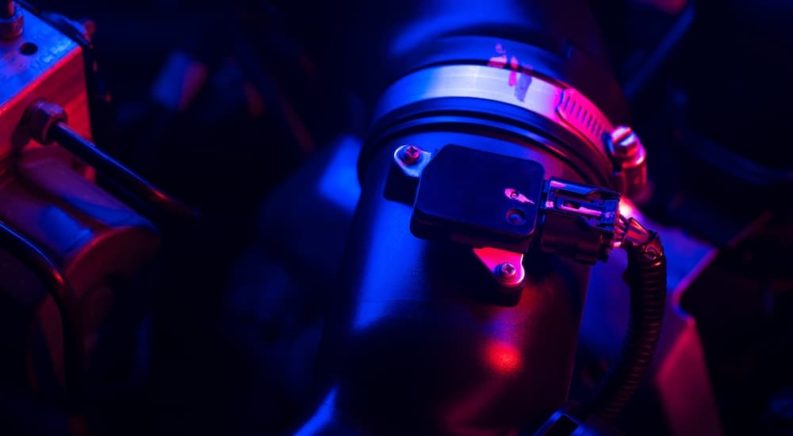It is no secret that modern vehicles are effectively computers with wheels. Old mechanics often bemoan the new electronics, and the recent chip shortage might have everyone questioning why cars need so many high-tech features, so we thought we would take some time to explore some of the key sensors in your car, truck, or SUV. While it may not be obvious during regular use (though it quickly becomes clear if you have experienced a malfunctioning sensor), the countless sensors and computers play a key role in extracting efficient power from your engine. Without them, your car wouldn’t know what to do.
Modern cars have dozens, if not hundreds, of sensors measuring everything from how cold it is outside to whether your seat belts are buckled. However, we are going to be looking at the key sensors your engine needs to produce maximum power while controlling fuel consumption and reducing emissions. These sensors all feed information to the ECU (engine control unit), which then adjusts engine performance appropriately. This is what allows modern vehicles to function reliably across a wide range of weather conditions, altitudes, and more while lasting longer and enjoying superior performance than engines of old.
Measuring Air and Fuel
The internal combustion engine generates power by igniting a mixture of air and fuel. It’s a fairly simple process that was first demonstrated over 150 years ago. However, while you can simply stuff random amounts of air and fuel into a cylinder and hope for the best, like any chemical reaction, it becomes more effective when precise ratios are combined. For modern cars, that is primarily done by measuring how much air is being fed into the engine in order to meter out the correct amount of fuel––and that takes sensors. Lots of sensors.
Mass Air Flow Sensor (MAF)
The MAF measures how much air is passing through the air intake and is positioned close to the start of the intake. This sensor has evolved quite a bit over the years, but most modern engines use a hot wire sensor. A clever piece of engineering, the hot wire sensor has no moving parts. Instead, it measures airflow based on the electrical resistance of a heated wire––greater airflow will cool the wire, decreasing its resistance. The result is a compact and low-maintenance sensor.
The hot wire MAF replaced two separate sensors used in older vehicles: the VAF (Volume Air Flow) and the IAT (Intake Air Temperature). This is because the VAF could only measure the volume of the air rather than the mass of the air. Since air density changes depending on departure, the same volume will have more oxygen on a colder day. The IAT provided the information needed to calculate the actual volume of the air going to the engine.
Manifold Absolute Pressure (MAP)
The MAP also measures how much air is going into the engine but does so in a different manner than the MAF. As the name implies, the MAP measures the air pressure in the intake manifold. Since the manifold is a set size, knowing the pressure helps the car calculate how much air is entering the engine. Like a VAF, a MAP must be combined with a MAT (Mass Air Temperature) sensor to get a complete reading. Not all cars will have a MAP since the MAF is a more accurate way to measure intake air. However, the MAP has advantages for cars with forced induction since it can measure how much boost is being applied.
Oxygen Sensor (O2)
While the MAF and MAP can calculate how much air is going into the engine, modern cars don’t stop there. O2 sensors are incorporated into the exhaust to measure how efficient the combustion process is. There are generally two O2 sensors––an “upstream” sensor before the catalytic converter and a “downstream” sensor after the catalytic converter. The upstream O2 sensor can tell if the engine is running lean or rich and adjust the fuel/air mix appropriately. The downstream O2 sensor is primarily for emissions purposes. Its results are compared to those of the upstream sensor to measure the effectiveness of the catalytic converter.
Fuel Temperature Sensor (FTS)
The final aspect of the air/fuel mix is the fuel itself. In a modern fuel-injection car, the ECU has near-perfect control over the volume of fuel injected into the engine, so there is no need to measure it. However, just like air, fuel density changes with temperature. Cold fuel is more energy-dense than hot fuel, so knowing the fuel temperature is important to maximizing efficiency. The FTS is generally located in or near the fuel tank rather than under the hood.

Measuring the Engine
In order to keep the engine running properly, modern cars use a variety of sensors to keep track of key mechanical components. All of the common warning lights have their own sensors, such as the ECT (Engine Coolant Temperature) sensor, the Oil Temperature Sensor, and the Oil Pressure Switch. However, there are also a number of sensors designed to report on key events to help fine-tune the combustion process.
Camshaft and Crankshaft Position Sensors
The crankshaft and camshafts are some of the most critical moving parts of the engine. The crankshaft dictates the position of the pistons, while the camshafts dictate the position of the intake and exhaust valves. Knowing the exact position of the crankshaft and camshafts as they rotate gives the ECU fine control over ignition timing, allowing a number of engineering tricks, such as advancing or retarding ignition timing or switching between the port and direct injection.
There are a number of different ways that camshaft and crankshaft position sensors work, with many of them measuring changes in magnetic fields as the pulley or flywheel rotates. One common technique uses the Hall Effect, which measures how the voltage of a current changes in the presence of a magnetic field. However, there are other types of camshaft and crankshaft position sensors, such as optical sensors that detect markings on the components.
Throttle Position Sensor (TPS)
Most modern cars use “drive-by-wire” throttle control where the accelerator pedal is no longer directly connected to the throttle body. Instead, a small electric motor in the throttle body manipulates the throttle position based on electrical signals received from the Accelerator Pedal Position Sensor. The TPS tells the ECU the exact position of the throttle, providing yet another piece of information the car includes in its calculations. Most modern TPS sensors are non-contact sensors that make use of the Hall Effect or other techniques to determine the throttle position without mechanical contact.

Knock Sensor
A final sensor modern cars use to make sure everything is running smoothly is the Knock Sensor. This sensor is mounted directly on the engine and detects the high-frequency vibrations produced by knock. Because modern cars have such fine control over the entire combustion process, the knock sensor is far more than simply a warning sensor. If knock is detected, the ECU can adjust ignition timing to eliminate it, maximizing power while keeping the engine running smoothly.
The Sensors Are There for a Reason!
The electronic nature of modern cars can frustrate any DIY enthusiast at times, but rest assured that all those computers and sensors are there for a reason. The huge number of sensors gives a modern vehicle complete knowledge of what the engine is doing, allowing it to fine-tune nearly every aspect of the combustion process on the fly to maximize power and minimize fuel consumption. Modern sensors are also simpler and more reliable than ever before, with many of them commonly lasting for the life of the vehicle without replacement. While you may need to change a sensor occasionally, the benefits are more than worth it.

